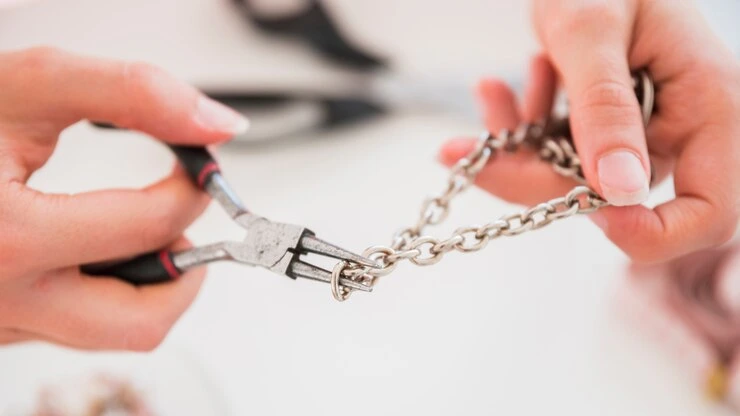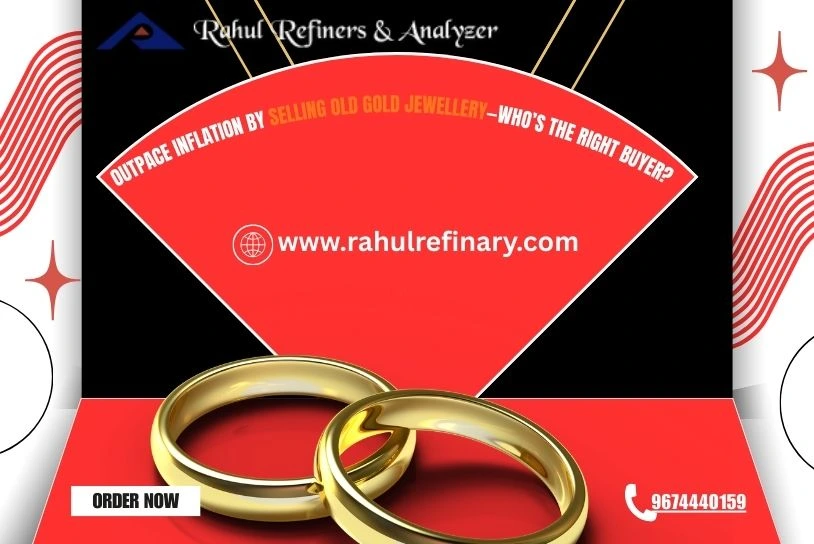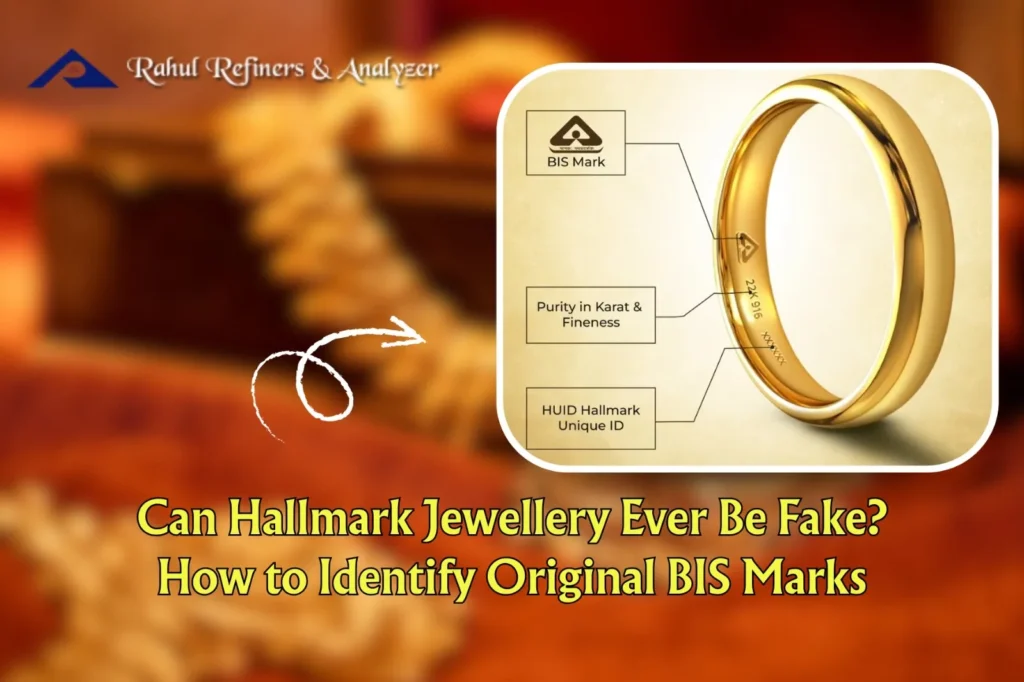RahulRefinery
24.12.2024
Jewelry Manufacturing Inspections: What You Need to Know
Hello Reader!
Welcome to the blog page of Rahul Refinery, one of the best old gold buyer in Kolkata.
The jewelry industry thrives on precision, artistry, and trust. A crucial aspect of maintaining these standards is Jewelry Manufacturing Inspection, a process that ensures every piece meets quality benchmarks before reaching the customer. At Rahul Refinery, known as the best gold buyer in Kolkata, we understand the importance of thorough inspections in preserving the integrity of the jewelry manufacturing process. Let’s delve into the key aspects of this vital procedure.
Table of Contents

The Importance of Jewelry Manufacturing Inspections
Jewelry is more than an adornment; it represents value, sentiment, and investment. Therefore, ensuring its quality is paramount. Jewelry Manufacturing Inspection serves several purposes:
- Quality Assurance: Ensures that each piece meets design specifications and material standards.
- Customer Satisfaction: Guarantees that customers receive durable, high-quality jewelry.
- Brand Reputation: Maintains trust and reliability, especially for businesses like Rahul Refinery, renowned as the best gold buyer in Kolkata.
Key Stages of Jewelry Manufacturing Inspection
- Material Inspection
- Raw materials, including gold, silver, and gemstones, undergo scrutiny for purity and authenticity.
- As the best old gold buyer in Kolkata, we emphasize verifying the purity of recycled gold to ensure it meets stringent standards.
- Design and Casting Inspection
- After crafting, the piece is inspected for design accuracy and casting defects like air bubbles, cracks, or misalignments.
- Advanced techniques such as X-ray scanning are often used for intricate designs.
- Stone Setting and Finish Check
- Stones are checked for secure settings, symmetry, and alignment.
- The final finish is evaluated for polish, texture, and overall appeal.
- Durability and Wearability Testing
- Jewelry undergoes stress testing to ensure durability.
- Pieces are evaluated for comfort and safety during wear.
- Final Quality Assurance
- A final inspection ensures all components, including clasps and hooks, function correctly.
- Only pieces that pass this stage are approved for sale.
Common Issues Detected During Jewelry Manufacturing Inspections
- Material Impurities: Low-purity gold or counterfeit gemstones can compromise quality.
- Casting Defects: Imperfections like porosity or uneven surfaces.
- Stone Setting Flaws: Loose or unevenly placed stones.
- Plating Irregularities: Uneven or peeling plating that affects appearance.

How can raw material inspections improve the quality of jewelry?
Raw material inspections are a critical component of the jewelry manufacturing process, significantly impacting the quality of the final products. At Rahul Refinery, we understand that ensuring the integrity of raw materials not only enhances the craftsmanship of jewelry but also builds trust with consumers. Here’s how raw material inspections can improve the quality of jewelry.
Ensuring Material Authenticity
One of the primary functions of raw material inspections is to verify the authenticity of precious metals and gemstones. By conducting thorough checks, manufacturers can confirm that materials meet industry standards and specifications. This includes:
- Gemstone Authentication: Inspectors assess the chemical composition of gemstones to distinguish between natural and synthetic stones, ensuring that only genuine materials are used in jewelry manufacturing.
- Metal Purity Testing: Raw materials undergo rigorous testing to confirm their purity levels. This is crucial as impurities can weaken the structural integrity of the jewelry.
Preventing Defects Before Production
Conducting inspections before production begins allows manufacturers to identify and eliminate defective materials early in the process. This proactive approach helps prevent issues such as:
- Sharp Edges and Scratches: Inspectors can catch defects like sharp edges or surface scratches that could compromise the safety and aesthetics of the final product.
- Inconsistencies in Appearance: By checking for color faults or variations in material quality, manufacturers can ensure a consistent look across all pieces, which is essential for maintaining brand reputation.
Enhancing Durability and Performance
Quality raw materials contribute significantly to the durability and longevity of jewelry. Inspections help ensure that:
- Alloy Composition Meets Standards: The right alloy compositions are critical for achieving desired characteristics such as strength, flexibility, and resistance to tarnish. Inspections verify that these compositions adhere to established guidelines.
- Testing for Allergens: Inspections can include tests for harmful substances, such as nickel, which can cause allergic reactions. Ensuring that jewelry is safe for all consumers is a vital aspect of quality control.
Building Consumer Trust
For businesses positioned as reputable buyers or sellers in the market—like being recognized as one of the best gold buyers in Kolkata—demonstrating a commitment to quality through rigorous raw material inspections fosters consumer trust. Customers are more likely to purchase from brands that prioritize quality assurance and ethical sourcing practices.
Supporting Ethical Sourcing
Raw material inspections also play a role in ensuring that materials are sourced ethically. By verifying supplier certifications and conducting audits, manufacturers can ensure compliance with ethical standards, which is increasingly important to consumers today. This commitment not only enhances product quality but also aligns with consumer values regarding sustainability.

What are the most common defects found during jewelry manufacturing inspections?
During jewelry manufacturing inspections, several common defects can be identified that may compromise the quality and integrity of the final products. Here are the most frequently encountered defects:
1. Visible Scratches or Surface Imperfections
Inspectors often find scratches, dents, or other blemishes on the surface of jewelry pieces. These imperfections can detract from the overall appearance and value of the item, making it essential to ensure a flawless finish.
2. Stone Irregularities
Gemstones must be free from cracks, chips, or inclusions. Any irregularities can diminish their aesthetic appeal and structural integrity. Inspectors carefully examine each stone to ensure it meets quality standards.
3. Soldering Flaws
Issues such as incomplete joints, gaps, or excess solder can compromise both the durability and aesthetics of jewelry. Proper soldering is crucial for ensuring that components are securely attached and function as intended.
4. Metal Discoloration
Tarnish or discoloration on metal components is another common defect noted during inspections. Such issues can significantly impact the overall appearance of the jewelry and may indicate poor-quality materials.
5. Gemstone Setting Issues
Loose or misaligned stones can lead to loss or damage over time. Inspectors check that all gemstones are securely set and properly aligned within their settings to prevent future issues.

6. Clasp and Fastener Problems
Clasps, closures, and fasteners must operate smoothly and securely. Defects in these components can lead to jewelry loss, making it vital for inspectors to verify their functionality.
7. Inaccurate Weight
The weight of the jewelry should match specified standards. Deviations can affect perceived value and marketability, so inspectors ensure that each piece conforms to weight requirements.
8. Missing or Misplaced Components
All components, including decorative elements and findings, should be present and correctly positioned. Missing parts can compromise the design and functionality of the piece.
9. Poor Polishing and Finishing
Inspectors assess the overall finish of jewelry items. Uneven polishing, rough edges, or unfinished areas are considered defects that need addressing before products reach consumers.
10. Design Inconsistencies
For jewelry sets or series, consistency in design is crucial. Inspectors check that all pieces match in style and appearance to maintain brand integrity.
11. Metal Purity and Hallmarks
Verifying metal purity is essential for compliance with regulatory standards. Inspectors check hallmarks to confirm that the jewelry meets legal requirements regarding metal content.
12. Incorrect Sizing
Jewelry items such as rings, bracelets, and necklaces must conform to specified size standards for a comfortable fit. Inspectors measure sizes accurately to prevent customer dissatisfaction.
Also Read: A Guide to the Jewelry Test for Manufacturers

The Role of Technology in Jewelry Manufacturing Inspection
Modern technology has revolutionized Jewelry Manufacturing Inspections. Tools like 3D scanners, spectrometers, and microscopes allow for meticulous evaluation. At Rahul Refinery, our advanced equipment ensures every piece meets the highest standards, reinforcing our reputation as the best gold buyer in Kolkata.
What are the key steps in the finishing and polishing process for jewelry?
The finishing and polishing process is crucial in jewelry manufacturing, as it transforms raw pieces into polished, high-quality products ready for sale. Here are the key steps involved in this intricate process:
1. Initial Cleaning
Before any polishing can take place, the jewelry must be thoroughly cleaned to remove dirt, grease, and any residues from previous manufacturing processes. This is typically done using a chemical cleaning solution, where the jewelry is soaked to ensure all contaminants are eliminated. This step is vital as it prepares the surface for effective polishing, ensuring no debris interferes with the process.
2. Cutting and Deburring
Once the jewelry is clean, any rough edges or scratches resulting from casting must be addressed. This is done using high-speed cutting tools or grinding wheels to smooth out imperfections. The goal is to remove any excess material and create a uniform surface that will enhance the final appearance of the piece.
3. Tumbling
In this step, jewelry pieces are placed in tumblers with various mediums (such as ceramic or plastic beads) to burnish the surface. Tumbling helps to further refine the surface and can remove small scratches while also polishing the metal. This process is particularly effective for achieving a smooth finish on multiple pieces at once.
4. Pre-Polishing
After tumbling, pre-polishing is performed using coarser polishing compounds and tools. This stage involves using rotary tools with different grits to gradually refine the surface of the jewelry. Starting with coarse abrasives helps eliminate deeper scratches before moving on to finer grits for a smoother finish.
5. Final Polishing
The final polishing stage employs softer materials such as felt or muslin wheels charged with fine polishing compounds. This step brings out the shine in the metal, creating a brilliant finish that enhances its visual appeal. The use of less abrasive compounds at this stage ensures that the piece achieves a high luster without risking damage.
6. Steam Cleaning
After polishing, jewelry is often subjected to steam cleaning. This process uses high-pressure steam to remove any residual polishing compounds and debris from the surface of the piece, resulting in a bright and clean finish.
7. Texturing and Finishing Touches
Once the basic polish is achieved, additional textures or finishes can be applied based on design specifications. Techniques such as sandblasting or engraving can add unique elements to each piece, enhancing its character and appeal.
8. Quality Control
Finally, each piece undergoes a quality control inspection to ensure that it meets all aesthetic and functional standards before being sent out for sale. Inspectors check for any remaining defects, ensuring that only high-quality products reach consumers.

FAQ
- What is the purpose of Jewelry Manufacturing Inspections? Jewelry Manufacturing Inspections ensure that every piece meets design specifications, quality standards, and durability requirements.
- What are common defects detected during inspections? Issues like material impurities, casting defects, loose stone settings, and uneven plating are commonly identified.
- How does technology improve Jewelry Manufacturing Inspections? Advanced tools like 3D scanners and spectrometers allow for detailed evaluations and help identify hidden flaws with precision.
- Why is material inspection important in jewelry manufacturing? Material inspection verifies the purity and authenticity of gold, gemstones, and other materials, ensuring high-quality end products.
- Why should I choose Rahul Refinery for jewelry inspections? With state-of-the-art equipment, expert staff, and a reputation as the best gold buyer in Kolkata, Rahul Refinery guarantees reliable and comprehensive inspection services.
Why Choose Rahul Refinery for Jewelry Manufacturing?
As an industry leader, Rahul Refinery offers comprehensive services, from gold refining to quality inspections. Here’s why we’re trusted:
- Expertise in Gold Purity: As the best old gold buyer in Kolkata, we ensure all materials meet purity standards, whether they’re freshly mined or recycled.
- State-of-the-Art Facilities: Our modern equipment guarantees precision in every stage of Jewelry Manufacturing Inspection.
- Commitment to Excellence: We go beyond refining to support the jewelry industry with top-tier inspection services.
Tips for Ensuring Quality in Jewelry Manufacturing
- Partner with Trusted Refiners: Collaborate with reputable companies like Rahul Refinery, known for quality and reliability.
- Invest in Advanced Tools: Leverage modern inspection technology for accuracy.
- Train Your Team: Skilled professionals are essential for identifying flaws and ensuring quality.
- Regular Audits: Conduct periodic reviews of the manufacturing process to maintain high standards.
Conclusion
Jewelry Manufacturing Inspections are the cornerstone of producing high-quality, durable, and beautiful jewelry. At Rahul Refinery, we not only refine gold but also uphold industry standards by ensuring the materials we handle meet the highest benchmarks. Whether you’re looking for the best old gold buyer in Kolkata or a partner in maintaining quality in jewelry manufacturing, Rahul Refinery is your trusted choice.
Quality isn’t optional in the jewelry business; it’s essential. Trust Rahul Refinery, the best gold buyer in Kolkata, to help you deliver perfection every time.



